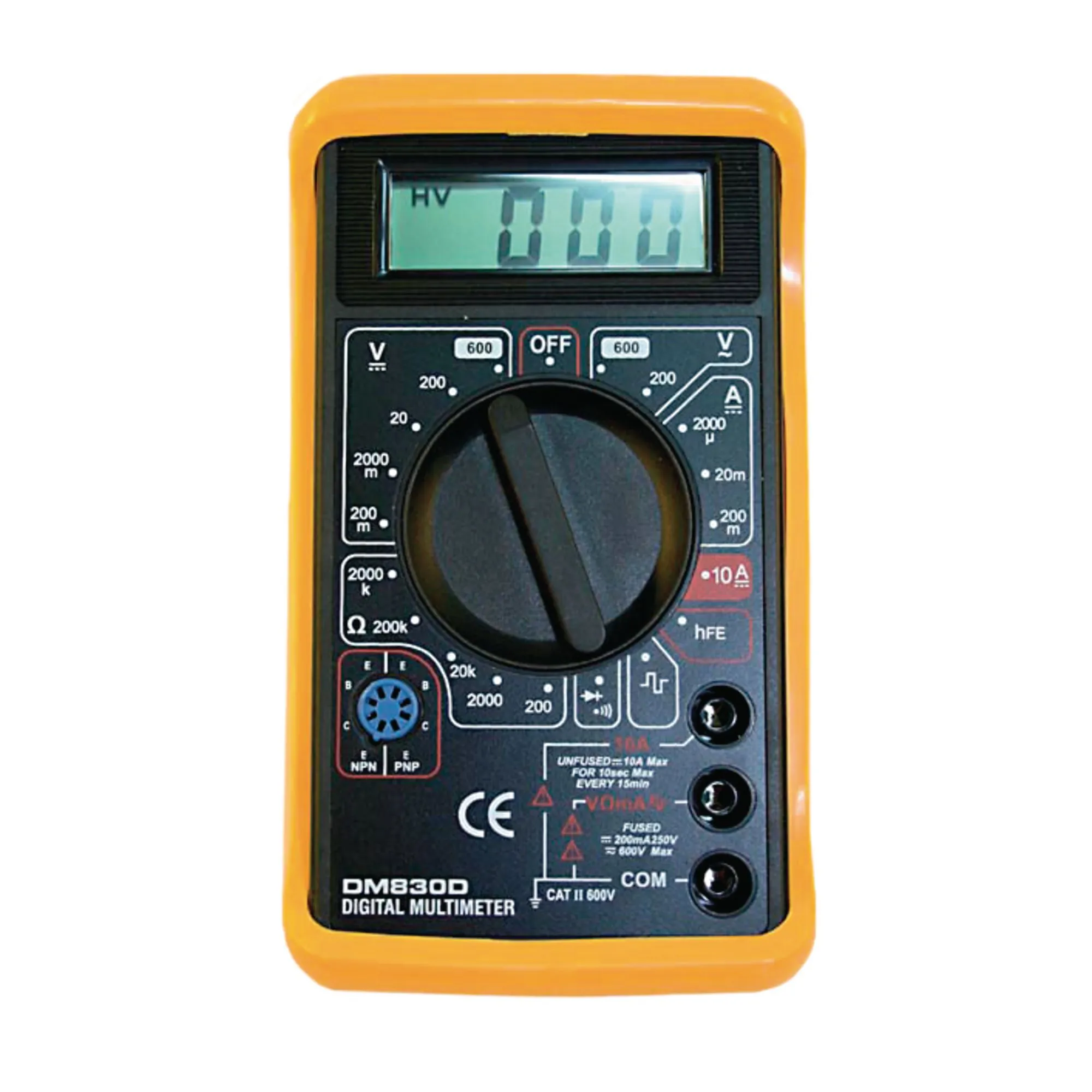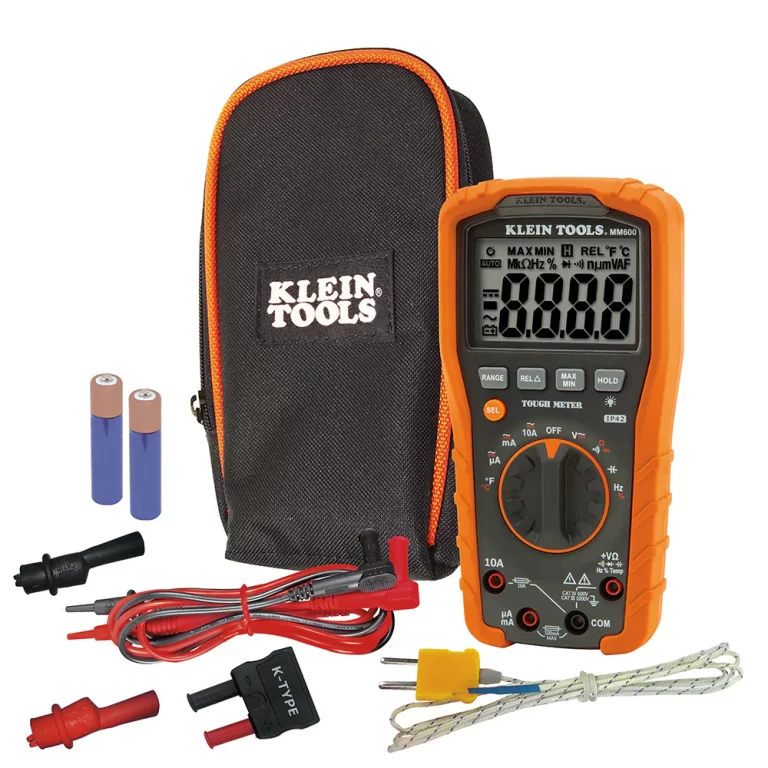
Mastering the Digital Multimeter: Guide to Electrical Measurement
The Evolution of Electrical Measurement Tools
The digital multimeter (DMM) stands as a testament to the rapid advancement of technology in the field of electrical measurement. This versatile tool has revolutionized the way electricians, engineers, and hobbyists approach electrical testing and troubleshooting. The journey from analog meters to digital multimeters marks a significant leap in accuracy, functionality, and ease of use. Early electrical measurement tools, such as the galvanometer, provided basic current measurements but lacked the precision and multi-functionality of modern DMMs.
The introduction of moving-coil meters in the late 19th century improved accuracy but still required manual range selection and careful reading of analog scales. The advent of digital technology in the mid-20th century paved the way for the development of digital multimeters, which first appeared in the 1970s. These early DMMs offered improved accuracy and easier reading of measurements but were expensive and limited in functionality compared to their modern counterparts. Today’s digital multimeters combine advanced microprocessor technology with robust design, offering a wide range of measurement capabilities in a compact, affordable package. The evolution of DMMs reflects the broader trends in electronics, with devices becoming more powerful, portable, and user-friendly over time.
Understanding the Core Functions of a Digital Multimeter
At its core, a digital multimeter serves as an electronic measuring instrument that combines several measurement functions in one unit. The term “multi” in multimeter refers to its ability to measure multiple electrical properties. The three fundamental measurements that any DMM can perform are voltage, current, and resistance. Voltage measurement allows users to determine the electrical potential difference between two points in a circuit, typically measured in volts (V). Current measurement quantifies the flow of electric charge through a conductor, measured in amperes (A).
Resistance measurement determines the opposition to current flow in an electrical component or circuit, measured in ohms (Ω). Beyond these basic functions, many modern DMMs offer additional measurement capabilities such as capacitance, frequency, temperature, and continuity testing. The digital display of a DMM provides clear, numerical readings, eliminating the need for interpretation of analog scales. This digital interface not only improves accuracy but also reduces the likelihood of reading errors. Most DMMs also feature auto-ranging capabilities, automatically selecting the appropriate measurement range for the quantity being measured, further simplifying the measurement process for users.
Key Features and Specifications of Modern Digital Multimeters
Modern digital multimeters boast a wide array of features designed to enhance functionality, accuracy, and user experience. One of the most important specifications of a DMM is its resolution, which refers to the smallest change in input that the meter can detect and display. Resolution is typically expressed in digits, with 3½ and 4½ digit displays being common in consumer-grade DMMs. Higher resolution allows for more precise measurements, which is crucial in sensitive electronic work. Accuracy, another critical specification, indicates how close the measured value is to the true value and is usually expressed as a percentage of the reading plus a number of least significant digits.
Other key features include input impedance, which should be high to minimize the DMM’s impact on the circuit being measured, and the ability to measure true RMS (Root Mean Square) values for AC signals, which provides more accurate readings for non-sinusoidal waveforms. Many modern DMMs also incorporate safety features such as overload protection, which guards against damage from excessive voltage or current, and category ratings (CAT II, CAT III, CAT IV) that indicate the meter’s ability to withstand voltage spikes in different electrical environments.
Advanced Measurement Capabilities of Digital Multimeters
While voltage, current, and resistance measurements form the foundation of a DMM’s functionality, advanced models offer a host of additional measurement capabilities that expand their utility across various applications. Capacitance measurement allows users to determine the charge-storing capacity of capacitors, a crucial function in electronic circuit design and troubleshooting.
Frequency measurement capabilities enable the DMM to act as a basic oscilloscope, measuring the number of cycles per second in an AC signal. Some DMMs also include temperature measurement functionality, typically using a thermocouple probe, which proves invaluable in HVAC diagnostics and other temperature-sensitive applications. Continuity testing, a feature that produces an audible tone when a low-resistance path is detected, simplifies the process of checking for breaks or shorts in circuits. Diode testing functionality allows for quick verification of semiconductor components.
More sophisticated DMMs may include data logging capabilities, allowing for the recording and analysis of measurements over time. Some models even offer PC connectivity, enabling users to transfer data for further analysis or documentation. These advanced features transform the DMM from a simple measurement tool into a comprehensive diagnostic device capable of addressing a wide range of electrical and electronic testing needs.
Selecting the Right Digital Multimeter for Your Needs
Choosing the appropriate digital multimeter requires careful consideration of several factors, including the intended application, required accuracy, and budget constraints. For general household use or basic electronic projects, a mid-range DMM with standard voltage, current, and resistance measurement capabilities may suffice. These models typically offer adequate accuracy and resolution for most non-professional applications at an affordable price point.
However, professionals in fields such as electrical engineering. Automotive diagnostics, or industrial maintenance may require more advanced features and higher accuracy. For these users, a high-end DMM with true RMS measurement, higher resolution, and additional functions like capacitance and frequency measurement would be more appropriate. Safety considerations should also play a crucial role in the selection process. Users working with high-voltage systems should opt for DMMs with appropriate category ratings to ensure protection against voltage spikes.
The meter’s durability and build quality become particularly important for those working in harsh environments or frequently using the tool in the field. Some users may prioritize additional features such as backlighting for work in low-light conditions. Data hold functionality for capturing readings in awkward positions, or relative measurement capabilities for comparing values. By carefully assessing their specific needs and the available features, users can select a DMM that provides the optimal balance of functionality, accuracy, and value for their particular requirements.
Proper Usage and Safety Considerations for Digital Multimeters
Proper usage and adherence to safety protocols are paramount when working with digital multimeters to ensure accurate measurements and prevent potential hazards. Before taking any measurements, users should familiarize themselves with the DMM’s manual, paying particular attention to the maximum input ratings for voltage, current, and resistance. Exceeding these ratings can damage the meter and pose safety risks to the user. When measuring voltage, the DMM should be connected in parallel with the component or circuit under test.
For current measurements, the meter must be connected in series, which often requires breaking the circuit. Resistance measurements should only be performed on de-energized circuits to avoid damaging the meter and ensure accurate readings. Users should always start with the highest range setting when the expected measurement value is unknown. Gradually decreasing the range for more precise readings if necessary. Proper lead placement is crucial; the black lead should typically be connected to the COM (common) terminal. While the red lead is connected to the appropriate terminal for the measurement being taken.
When working with high voltages or in industrial settings, users should wear appropriate personal protective equipment (PPE) such as insulated gloves and safety glasses. Regular inspection of the DMM and its test leads for signs of wear or damage is essential to maintain safety and measurement accuracy. By following these guidelines and maintaining a healthy respect for the potential dangers of electrical systems. Users can safely and effectively utilize their digital multimeters for a wide range of applications.
Troubleshooting and Maintaining Your Digital Multimeter
Even the most reliable digital multimeters may occasionally encounter issues or require maintenance to ensure continued accuracy and functionality. Common problems include inaccurate readings, failure to power on, or erratic behavior. Often, these issues can be resolved through simple troubleshooting steps. If the DMM fails to power on, checking and replacing the batteries is the first step. Many DMMs feature a low battery indicator, but this may not always function correctly. Inaccurate readings can sometimes be attributed to worn or damaged test leads. Inspecting and replacing these as necessary can resolve many measurement discrepancies.
If the meter displays erratic readings or fails to auto-range properly. Performing a factory reset (if available) or recalibrating the meter may solve the issue. Regular calibration is essential for maintaining accuracy, especially for professional-grade DMMs used in critical applications. Some high-end models offer self-calibration features, while others may require periodic professional calibration services. Keeping the DMM clean and dry is crucial for its longevity and proper function. Users should avoid exposing the meter to extreme temperatures, humidity, or dust.
When not in use, storing the DMM in a protective case can prevent physical damage and extend its lifespan. For meters with rechargeable batteries, following proper charging procedures as outlined in the manual can help maintain battery health and longevity. By implementing these maintenance practices and promptly addressing any issues that arise. Users can ensure their digital multimeters remain reliable and accurate tools for years to come.
Integrating Digital Multimeters with Modern Technology
The integration of digital multimeters with modern technology has opened up new possibilities for data analysis, remote monitoring, and enhanced diagnostics. Many contemporary DMMs now feature Bluetooth or Wi-Fi connectivity, allowing for wireless communication with smartphones, tablets, or computers. This connectivity enables real-time data transmission, remote monitoring of measurements, and the ability to log data over extended periods.
Mobile apps designed to interface with these connected DMMs offer features such as graphical representation of measurements. Data export capabilities, and even guided troubleshooting procedures. Some advanced models incorporate oscilloscope functionality, blurring the lines between traditional DMMs and more specialized test equipment. This convergence of technologies provides users with more comprehensive diagnostic capabilities in a single, portable device.
The integration of DMMs with Internet of Things (IoT) platforms allows for the creation of smart monitoring systems in industrial and commercial settings. These systems can continuously monitor electrical parameters, send alerts when values exceed predefined thresholds. Even predict potential failures based on trend analysis. As technology continues to advance, the capabilities of digital multimeters are likely to expand further. Potentially incorporating features such as augmented reality interfaces for guided measurements or AI-powered diagnostics to assist in complex troubleshooting scenarios.
The Future of Digital Multimeters and Electrical Measurement
The future of digital multimeters promises exciting advancements in technology, functionality, and user experience. As miniaturization of electronic components continues, DMMs are likely to become even more compact and portable without sacrificing functionality. Advancements in display technology may lead to the incorporation of high-resolution color touchscreens. Providing more intuitive interfaces and the ability to display complex waveforms and data visualizations directly on the device. The integration of artificial intelligence and machine learning algorithms could revolutionize electrical troubleshooting, with DMMs capable of analyzing measurement patterns to suggest potential causes of electrical issues or predict component failures before they occur.
Improvements in battery technology may result in DMMs with significantly longer operating times or the ability to harvest energy from the environment, reducing the need for battery replacements. The growing emphasis on renewable energy and smart grid technologies may drive the development of specialized DMM functions for solar panel diagnostics, energy efficiency analysis, and power quality assessment. As the Internet of Things continues to expand, future DMMs may serve as nodes in larger sensor networks. Continuously monitoring electrical systems and contributing to predictive maintenance strategies in industrial and commercial settings.
The ongoing digital transformation across industries is likely to further blur the lines between traditional test equipment categories. Potentially leading to hybrid devices that combine the functionality of DMMs, oscilloscopes, spectrum analyzers, and other specialized instruments. These advancements will not only enhance the capabilities of professional users but also make advanced electrical measurement and diagnostics more accessible to hobbyists and consumers, fostering innovation and improving electrical safety across various domains.
Conclusion
In conclusion, the digital multimeter has evolved from a simple measurement tool into an indispensable device for anyone working with electrical systems. Its journey from basic analog meters to sophisticated digital instruments reflects the broader trends in technology. Emphasizing accuracy, versatility, and user-friendliness. Modern DMMs offer a wide range of measurement capabilities, advanced features, and connectivity options that cater to diverse needs across various industries and applications.
As technology continues to advance, digital multimeters will likely become even more integrated with other digital systems. Offering enhanced diagnostic capabilities and playing a crucial role in the maintenance and optimization of increasingly complex electrical and electronic systems. Whether used by professional electricians, engineers, hobbyists, or homeowners. The digital multimeter remains an essential tool for understanding and working with the electrical world around us, ensuring safety, efficiency, and innovation in countless applications.





